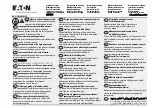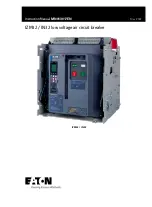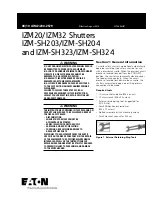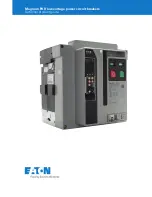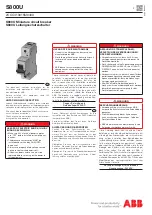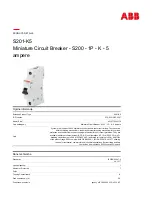
L2275
Emax UL
56/132
Doc. N°
Mod.
RH0109002
Apparatus
Scale
Page N°
14. SACE PR112/PD-A Trip unit – Identification
The PR112 units available fitted with a dialogue unit, with Modbus™ protocol , are:
• PR112/PD-A (in accordance with ANSI/UL Standards)
14.1 Standard
The PR112 /PD-A has been designed to work in accordance with the following international standard:
Low voltage AC and DC power circuit breakers used in enclosures ANSI/UL 1066.
14.2 Safety notes
For correct use and management of the PR112 protection unit fitted with a dialogue unit with Modbus™ protocol [PR112/PD-A], it is also necessary
to consider what is given in the following documents:
• “PR112/P-A Instruction manuals “ (par.13)
• “PR112/PD Modbus™ System Interface” - see par.14.3 (doc. n° RH0295)
• “Modbus™ installation guideline” - see par. 14.3 (doc. n° RH0298)
14.3 Various notes
A. All the detailed information on the communication interface (necessary for development of the supervision and control system by the System
integrator) is given in document RH0295.
B. All the detailed information necessary to make the physical external connections to the protection trip unit, as well as the maximum distances
of the cabling, the type of conductor to be used, etc. are given in document RH0298.
C. The following are trademarks of Modicon, Inc.:
Modbus
984
P190
SM85
ModConnect
BM85
RR85
SQ85
Modcom
BP85
SA85
14.4
Specifications
14.4.1 General
When there are no auxiliary power supplies, the communication functions are not active.
The PR112 units fitted with dialogue allow a supervision system to acquire information.
The information available is:
Data transmitted from the PR112/PD-A to the supervision system
1
Protection parameters set
2
Configuration parameters set
3
Phase, neutral and ground currents
4
Status of the power circuit breaker (open-closed)
5
Position of the power circuit breaker (connected-isolated)
6
State of the springs (charged-discharged)
7
Number of mechanical power circuit breaker operations, overall number of trips and for each protection
8
Last current interrupted
9
Contact wear
10
State of the protection functions (prealarm funct.L, timing funct. L, S, G…)
11
Overtemperature protection function
12
State of internal bus communication
13
**
**
See par. 14.3 note A































